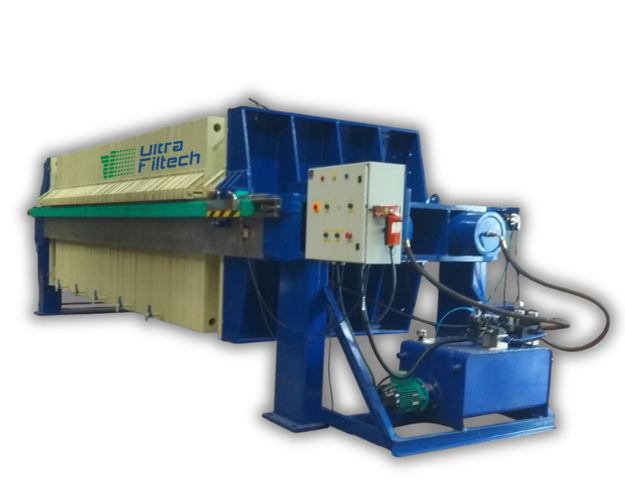In industries where separating solids from liquids is a key process, filter press machines have become essential equipment. Among the different types, the semi-automatic filter press machine strikes a balance between manual and fully automated systems, making it both cost-effective and efficient.
But what exactly is a semi-automatic filter press, how does it work, and where is it used? This complete guide will help you understand everything you need to know.
What is a Semi-Automatic Filter Press Machine?
A semi-automatic filter press machine is a type of pressure filtration device used to separate solids and liquids in slurry mixtures. As the name suggests, it combines both manual and automated operations.
Automation is used for: Hydraulic plate closing, filtration pressure control, and sometimes partial plate shifting.
Manual work is required for: Cake discharge (scraping cakes off plates), shifting some plates, and cleaning the filter cloth.
This makes it a perfect choice for medium-scale industries that want efficiency without the higher cost of a fully automatic system.
Key Components of a Semi-Automatic Filter Press
To understand its operation, let’s look at its main parts:
Filter Plates – Form chambers where slurry enters and filtration occurs.
Filter Cloth – Captures solid particles while allowing filtrate (clean liquid) to pass.
Hydraulic System – Automatically applies pressure to close plates tightly.
Manual Plate Shifting Mechanism – Requires an operator to move plates and remove cakes.
Piping & Drainage System – Collects and removes filtrate.
Drip Trays – Prevents leakage during filtration.
Control Panel – Semi-automated controls for hydraulic operations.
How Does a Semi-Automatic Filter Press Work?
The working process of a semi-automatic filter press can be broken down into these steps:
1. Slurry Feeding
The slurry (mixture of liquid and solid particles) is pumped into the filter press chambers under pressure.
2. Filtration Process
Filter cloths trap solid particles inside the chambers.
Clean liquid (filtrate) passes through and exits via outlets.
Over time, solids accumulate to form a filter cake.
3. Cake Formation
As pressure builds, more water is removed from the slurry. The cake becomes drier, while filtrate becomes clearer.
4. Completion of Filtration Cycle
Once the maximum pressure is reached and no more filtrate is exiting, the cycle ends.
5. Manual Cake Discharge
Unlike automatic filter presses, an operator must manually shift the plates and scrape the filter cakes from the cloths.
6. Cleaning and Preparation for Next Cycle
Filter cloths may need manual washing before restarting the next filtration batch.
Advantages of a Semi-Automatic Filter Press
Cost-Effective – More affordable than fully automatic systems.
Reliable Performance – Provides effective solid-liquid separation with lower running costs.
Less Labor-Intensive than Manual Press – Automation of plate closing and hydraulic operations reduces effort.
Customizable – Can be built in different sizes depending on industry needs.
Durability – Made with strong frames and plates for long-term industrial use.
Limitations of Semi-Automatic Filter Press
Requires Human Intervention – Manual cake removal increases cycle time.
Lower Productivity – Not as fast as fully automatic filter presses.
Higher Labor Requirement – More workers needed compared to automatic systems.
Cloth Maintenance – Frequent manual cleaning may be required.
Applications of Semi-Automatic Filter Press
Semi-automatic filter presses are widely used in:
Mining & Minerals – For ore and concentrate dewatering.
Chemicals & Dyes – To separate pigments, dyes, and chemical mixtures.
Food & Beverage – Sugar, edible oil, juice clarification, and brewery waste management.
Pharmaceuticals – Separation of active ingredients and by-products.
Wastewater Treatment – For municipal sludge dewatering and industrial effluents.
Semi-Automatic vs Automatic Filter Press
| Feature | Semi-Automatic | Automatic |
|---|---|---|
| Operation | Partial automation | Fully automated |
| Cake Discharge | Manual | Automatic |
| Labor Requirement | Higher | Very low |
| Cost | Lower | Higher |
| Productivity | Moderate | High |
| Best For | Medium-scale industries | Large-scale industries |
Final Thoughts
A semi-automatic filter press machine is a smart investment for businesses that need reliable filtration but want to avoid the higher costs of full automation. It offers an excellent balance between efficiency and affordability, making it suitable for medium-scale industries.
If your operation involves frequent solid-liquid separation but doesn’t require round-the-clock automation, a semi-automatic filter press is the perfect choice.

